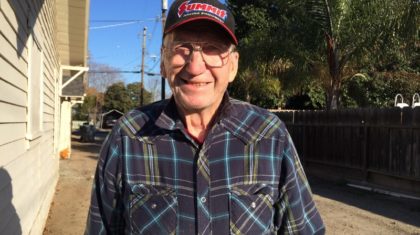#WalkBikeForward: Join us on our journey honoring key moments and people that have shaped our field as we celebrate 20 years of creating active, healthy communities.

Martha Roskowski is Vice President for Local Innovation at People For Bikes, directing the Green Lane Project and the new Big Jump project. She formerly ran America Bikes and Bicycle Colorado, and served on the board of the League of American Bicyclists and the Alliance for Biking & Walking.
We’ve Come a Long Way
In 1996, there was a national push to create strong state and local advocacy efforts across the country. That was a big deal, and it really helped get bike advocacy more organized. Since then we’ve seen the rise of professionals who really know how to design and deliver bike projects. Alta was the first to systematically get out there and hire the people who knew the most about bikes. They were the pioneers, and I am endlessly grateful for their work.
For a long time in this work, it felt like traffic engineers were there to block us — “you can’t do that!” They now want to know “how” are we going to build good projects. It feels like we’ve crossed the Rubicon on the mainstreaming of design for biking. The rise of NACTO is an indicator of how city transportation leaders are shifting the frame on transportation.
On a national level, the creation of the Safe Routes to School program provided resources and momentum to make streets safer for kids. The rise of Complete Streets provided a framework for rethinking street design.
Another of the biggest changes over the past 20 years is the embrace of bicycling across so many sectors. It’s not all about bikes anymore — it’s about building better communities, promoting tourism and improving people’s health. There’s growing agreement that our single-minded focus on moving cars has not been broadly beneficial to people or communities. And if we’re serious about climate change, it means that people will need to bike and walk more.
We’re also now seeing community leaders from low-income neighborhoods, leaders of color embracing walking and biking. They want to improve their communities and see the potential of biking and walking to do that. It promotes recreation and gets more people on the streets, which can build more neighborhood cohesion and boost local businesses.
The Next Thing for Bikes
The next big idea is building connected networks for people to ride bikes. We need to change how the streets work. Car lanes are fully connected everywhere, as are sidewalks in many places. But for bikes, it’s still pretty spotty. In ten years we are going to see many more places where it’s easy and safe for the whole family to ride all over town for recreation, exercise and going to work or school.
A big question is whether driverless cars become public transportation or just the next new fancy kind of car people buy. If they become public transportation, then it will help to solve the problem of where to find space in the streets for bikes.


